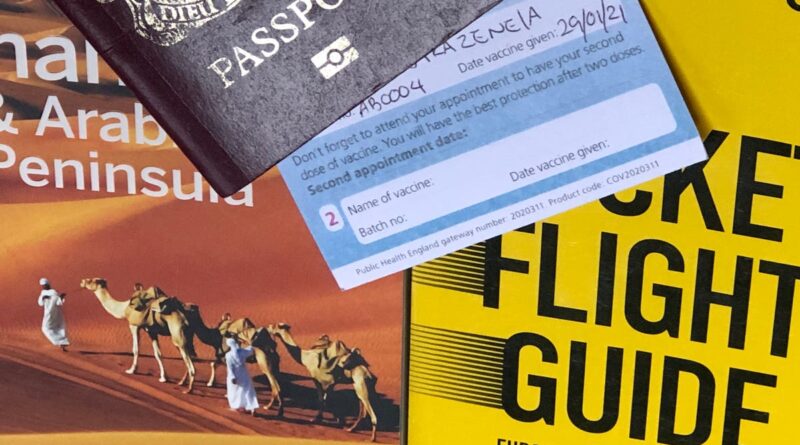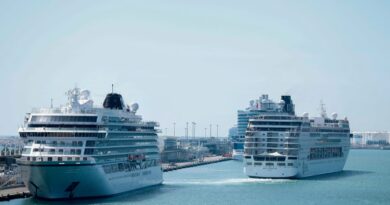Revealed: Our changing travel tastes, by guidebook sales
On the list of the top 25 bestselling guidebooks I am looking at, a dozen involve just two nations.
France appears three times with whole-country guides; three more cover Paris; and individual guidebooks to Corsica and the Dordogne make the French score up to eight.
Italy is the other high performer: two whole-country guides, plus individual books for Rome and for Tuscany & Umbria.
The remainder of the list focuses on particular patches of the world:
- City guides to Amsterdam and Prague
- Country guides to India and Sri Lanka
- Regional guides to Central Asia, southeast Asia and Vietnam
- Westbound: only New York and the Caribbean make the cut from the Americas
That leaves three of the 25 titles. Each of them indicates this is not a list from spring 2024. They are all branded “survival kits”, and cover Israel, Jordan and Syria, and Cuba.
Israel and Syria are both on the Foreign Office no-go list due to the tragic conflicts in the region. Meanwhile, Cuba has lost its last regular air link from the UK, making the journey to the Caribbean’s largest island onerous and only for the strongly committed.
The list was actually compiled for me by Stanfords, the world’s largest map and travel guide retailer, 30 years ago.
In May 1994, The Independent signed me up as travel correspondent. What were they thinking? Allow me a brief diversion into the circumstances. My CV read: “Aircraft cleaner, airport security officer, maths teacher, sound engineer, guidebook writer”. It was the last of these that provided the ridiculously lucky opportunity to follow in the considerable footsteps of the original travel correspondent, Frank Barrett.
With a particular interest in the guidebook world, in May 1994 I asked Stanfords for their bestsellers.
What a difference three decades make. After a slump in sales caused by Covid and the easy online availability of free information, travel guides are enjoying a resurgence. And the top 25 makes surprising – and heartening – reading.
The most popular countries by the number of titles are no longer France and Italy; Japan and Portugal have taken over. Each has three in the chart. Japan has two whole-country guides, with Kyoto and Osaka also appearing, while the other trio comprises Portugal, Lisbon and Porto.
City guides are remarkably popular. Amsterdam and Paris are still represented, and are joined by Athens, Berlin, Bologna, Copenhagen, Valencia (unbelievably the only Spanish location in either of the lists) and Vienna.
The region of Puglia boosts Italy’s showing to two. Norway makes the only other whole-European-country appearance besides Portugal. Going west, the Americas appear only once, in the shape of Costa Rica.
Going east, Lonely Planet’s Jordan is still there, minus the Syria component. So is the publisher’s Vietnam guide, now in its 16th edition. Georgia, Armenia and Azerbaijan keep up the eastward theme, bracketed by Bradt Guides to both Albania and Uzbekistan.
The transformation of the top 25 reflects changes in travel. In 1994, the Channel Tunnel had yet to open to Eurostar passenger trains and Eurotunnel shuttles. But France was still by far the easiest and most popular destination.
The idea of flying to some of those city-break destinations in 2024 – Athens, Copenhagen or Lisbon – for the weekend was preposterous: airlines would demand a minimum of £300 for the airfare alone. Budget carriers have transformed the opportunities within Europe; I am writing this on a £30, two-hour flight from Paris to Zagreb on Lauda Air.
Lonely Planet appears to be on the road to planetary domination; in 1994 it had six in the charts, today the figure is 18 (of which 10 are pocket city guides).
Yet the real surprise is the demand for rail guides: DK’s Europe by Train and the European Rail Timetable perform strongly. My sense is that on travel’s Venn diagram there is a substantial overlap between those who love train travel and those who love guidebooks.
For further evidence of that, as well as a renewed desire to explore interesting corners of our own country in a sustainable fashion, I give you Exploring the Elizabeth Line: 23 Walks from Crossrail Stations.
The author, Jeff Lock, has seized on the tourism potential for this new piece of infrastructure running east-west through London. That wasn’t on my bingo card in 1994.
Then and now: top-selling guidebooks
Data compiled by Stanfords, with special thanks to Jude Brosnan for the 2024 table
1994
1 France: Michelin Red Guide 1994
2 India: a Travel Survival Kit (Lonely Planet)
3 Central Asia Cadogan Guide
4 Jordan & Syria: a Travel Survival Kit (Lonely Planet)
5 Vietnam: a Travel Survival Kit (Lonely Planet)
6 Travellers Survival Kit Cuba (Vacation Work)
7 Italia Michelin Red Guide (Michelin)
8 France Gault Millau 1994 (Gault Millau)
9 Paris Eyewitness Guide (Dorling Kindersley)
10 Italy Rough Guide
11 Paris Time Out
12 Sri Lanka: a Travel Survival Kit (Lonely Planet)
13 South East Asia on a Shoestring (Lonely Planet)
14 Landscapes of Corsica (Sunflower)
15 Rome Eyewitness Guide (DK)
16 Dordogne Michelin Green Guide
17 Portugal Cadogan
18 Prague Cadogan
19 New York Eyewitness Guide (DK)
20 Israel: a Travel Survival Kit (Lonely Planet)
21 Paris Rough Guide
22 Fodor’s Caribbean ’94
23 Tuscany & Umbria Cadogan
24 Amsterdam Time Out
25 France Hotels & Country Inns of Character (Rivages)
2024
1 DK Europe by Train
2 Mini Rough Guide to Puglia
3 Exploring the Elizabeth Line: 23 Walks from Crossrail Stations
4 Lonely Planet Japan
5 Lonely Planet Experience Japan
6 Mini Rough Guide to Bologna
7 European Rail Timetable
8 Lonely Planet Pocket Athens
9 Lonely Planet Pocket Valencia
10 Lonely Planet Georgia, Armenia & Azerbaijan
11 Lonely Planet Pocket Lisbon
12 Uzbekistan Bradt Guide
13 Albania Bradt Guide
14 Lonely Planet Pocket Amsterdam
15 Lonely Planet Pocket Copenhagen
16 Lonely Planet Costa Rica
17 Lonely Planet Pocket Porto
18 Lonely Planet Vietnam
19 Lonely Planet Pocket Paris
20 Lonely Planet Portugal
21 Lonely Planet Norway
22 Lonely Planet Pocket Kyoto & Osaka
23 Lonely Planet Pocket Berlin
24 Lonely Planet Jordan
25 Lonely Planet Pocket Vienna
Simon Calder, also known as The Man Who Pays His Way, has been writing about travel for The Independent since 1994. In his weekly opinion column, he explores a key travel issue – and what it means for you.




